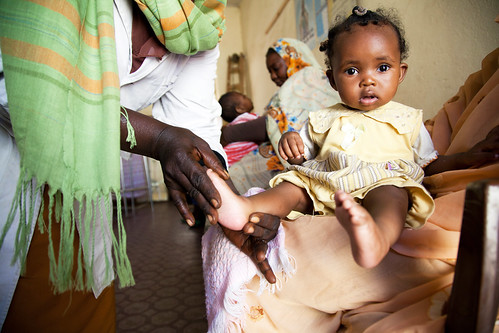2012 is off to a sobering start for those of us in the global health community, against a backdrop of continuing global financial volatility coupled with complex reforms at the Global Fund to Fight AIDS, Tuberculosis and Malaria. New research from the Institute for Health Metrics and Evaluation (IMHE) shows a slowdown—and perhaps a plateauing—of the historical growth in global health funding to which we have been accustomed during the past decade. This new reality is, rightly, leading to questions about whether substantial—if not radical—changes are needed in the highly fragmented global health ecosystem. And yet, at the same time, there are signs of new initiatives.
I believe the slowdown in global health funding requires adjusting our expectations in the coming years. Last fall, after participating in a number of inspiring discussions during the UN General Assembly, I reflected about each one of the critical global health priorities to which we have all pledged our support in recent years: the Millennium Development Goals (MDGs) for nutrition, child and maternal health, and HIV/AIDS, TB, and malaria, as well as non-communicable diseases. It struck me that while most of these health interventions are destined to help the same mother or child, we have created very separate initiatives and institutions to deliver on each. We have been able to elevate the awareness and commitments for each of these priorities, but now the challenge is, like Humpty Dumpty, how do we now put them all back together again?
In today's tougher financing environment, further fragmentation in the global health ecosystem could bring unacceptable missed opportunities for achieving synergies and efficiencies of aid in reaching every vulnerable mother and child. Multiplication of initiatives and operational and financial vehicles is no longer feasible. Rather, we need to have a serious conversation about adjustments in expectations for funding, how to use existing funding vehicles, and what global health architecture reforms may be required to ensure that we can still deliver on all of our existing commitments across the health-related MDGs. It will be important that this discussion gives equal voice to all of the different constituencies for these goals, including those who have not had such a strong voice historically. And we must weigh carefully the benefits and potential risks of any separate initiatives or new organizations, which are likely to undermine our ability to achieve what we already promised. The ultimate test of any new initiative or entity should be whether it will strengthen the capacity of developing countries to reach the goals they have already set and help ensure that future health financing is sustainable.
There is no doubt we are facing challenging times ahead for our work in global health. But I also have no doubt that with renewed collaboration, focus, innovation, and commitment, we will continue delivering on our collective promises to the world.
More
Making Maya cry: why health systems matter



Join the Conversation